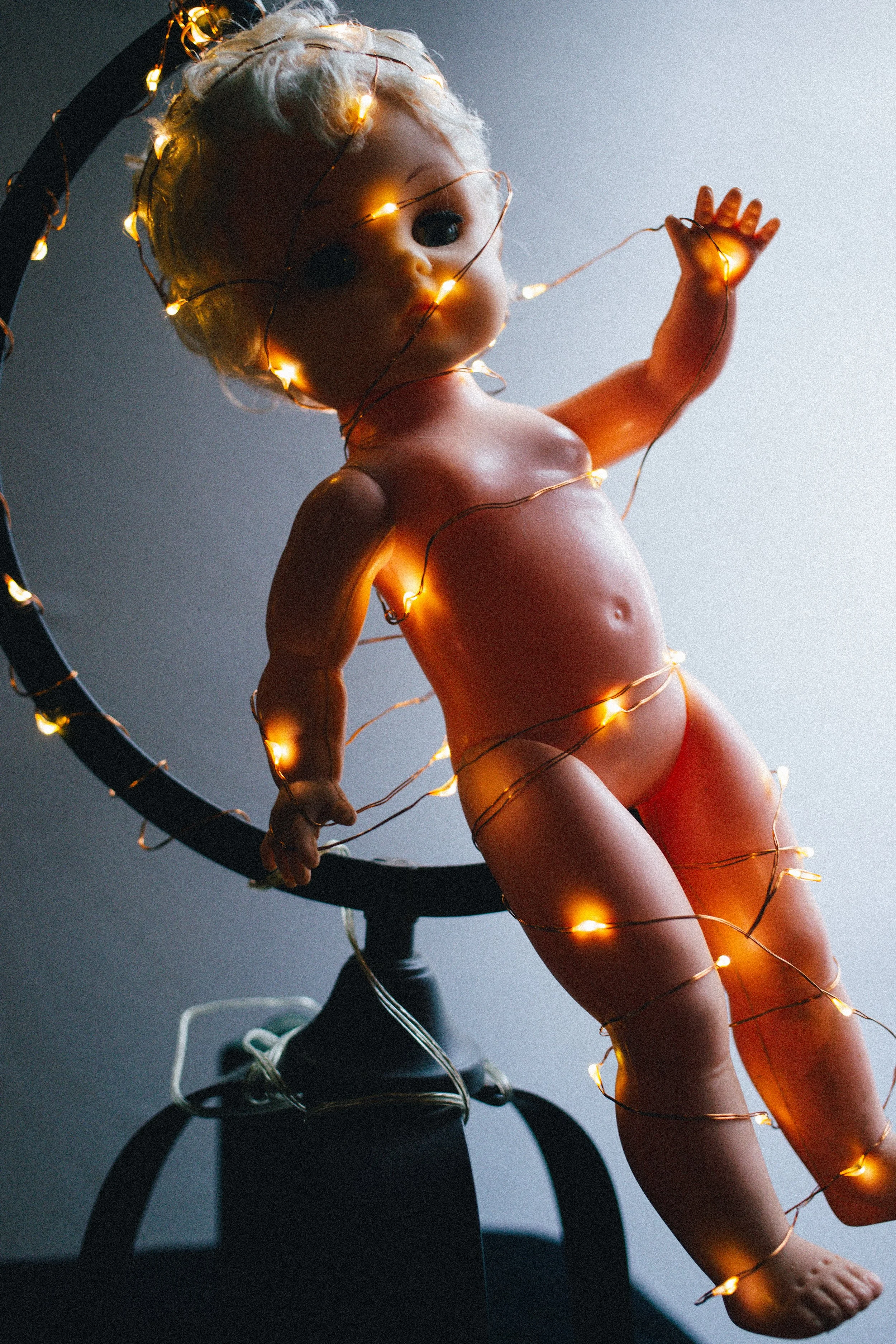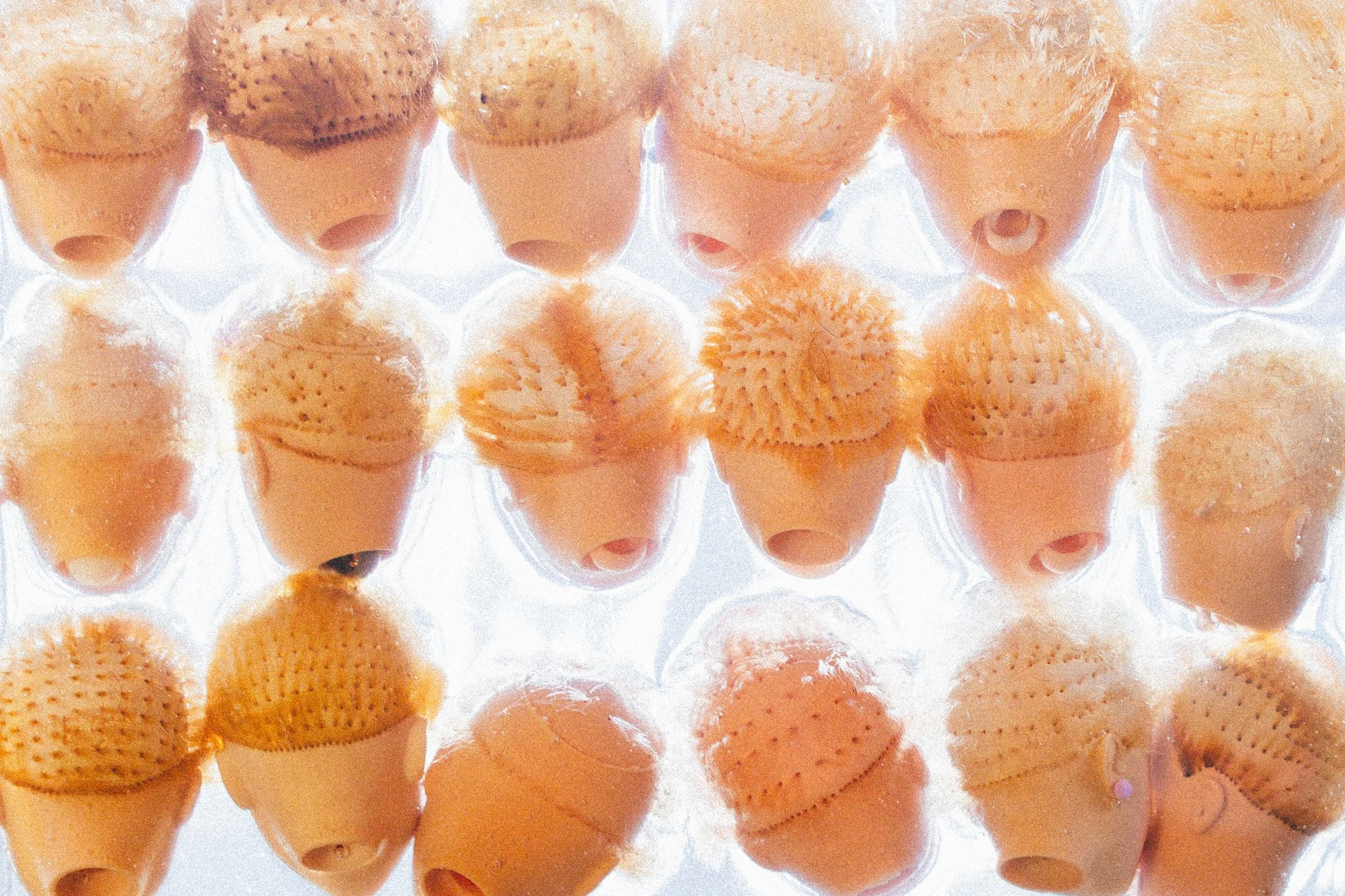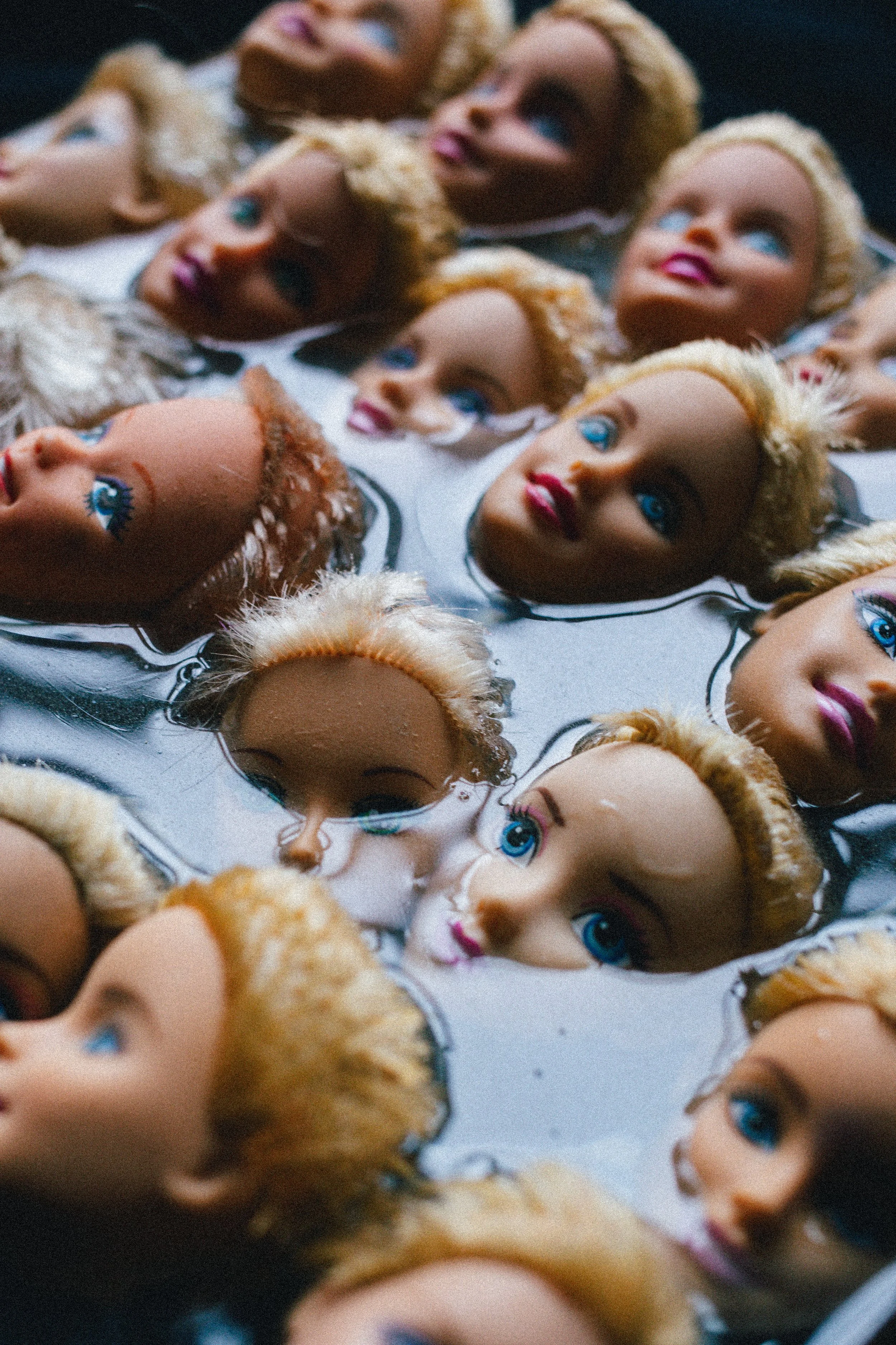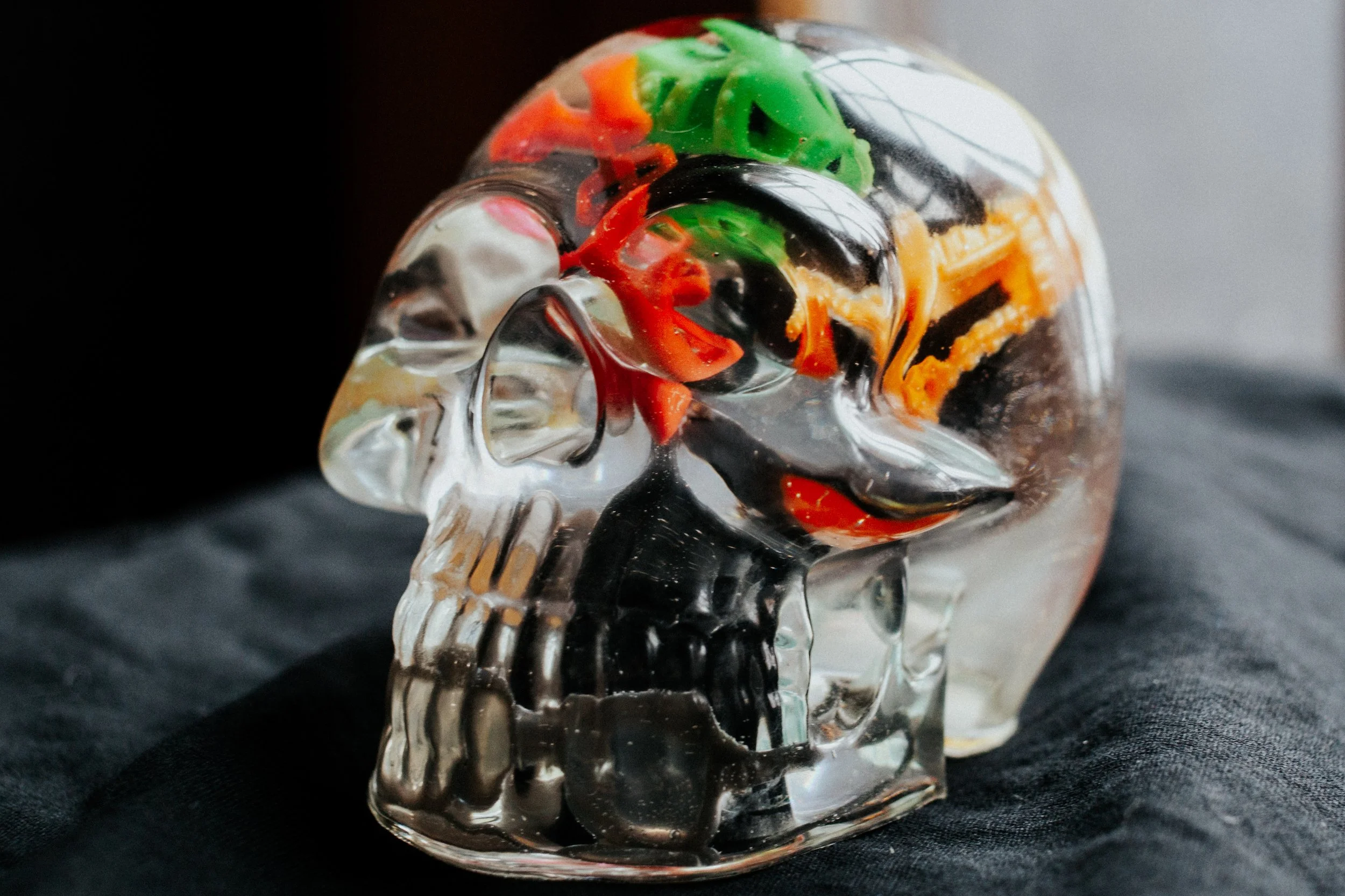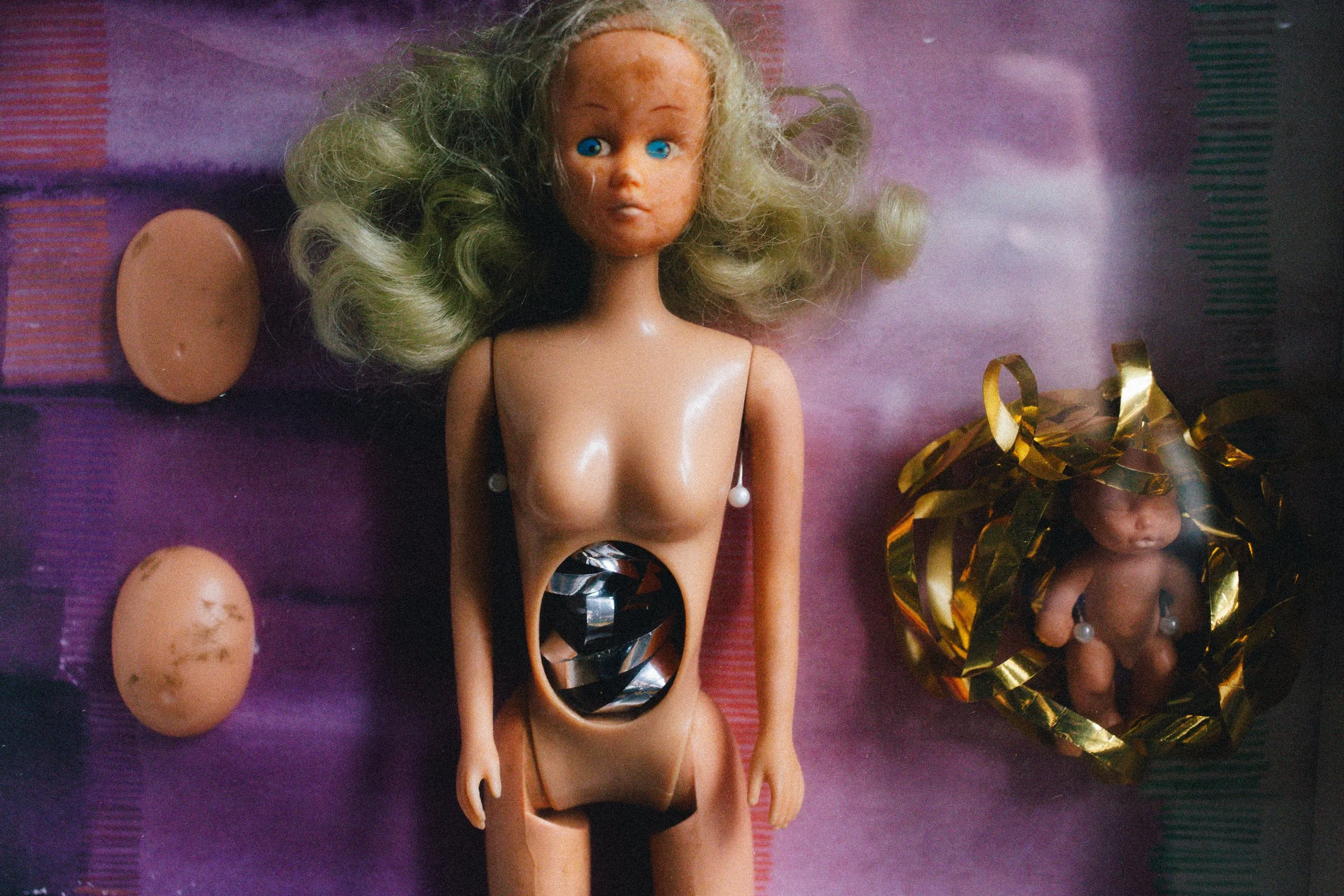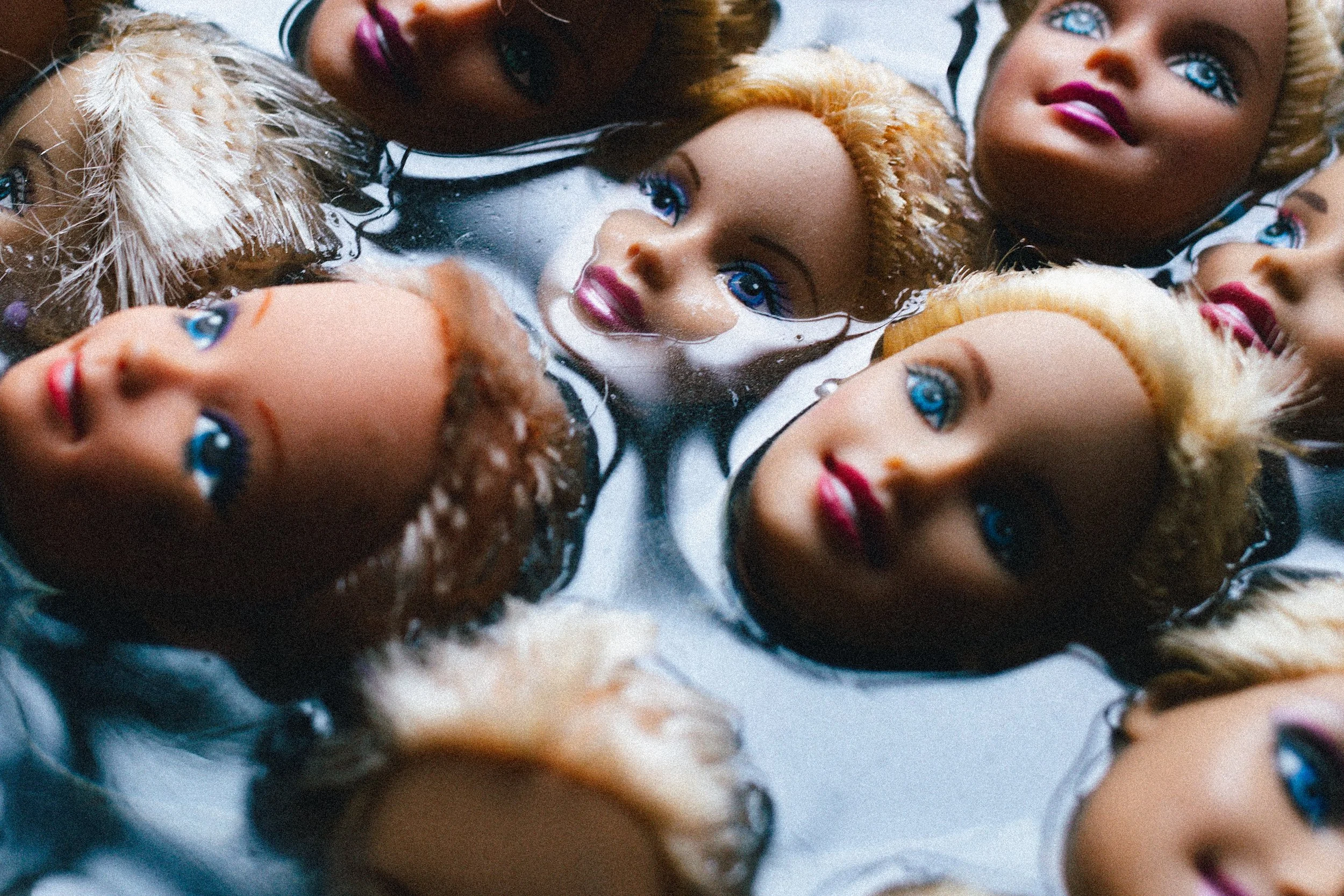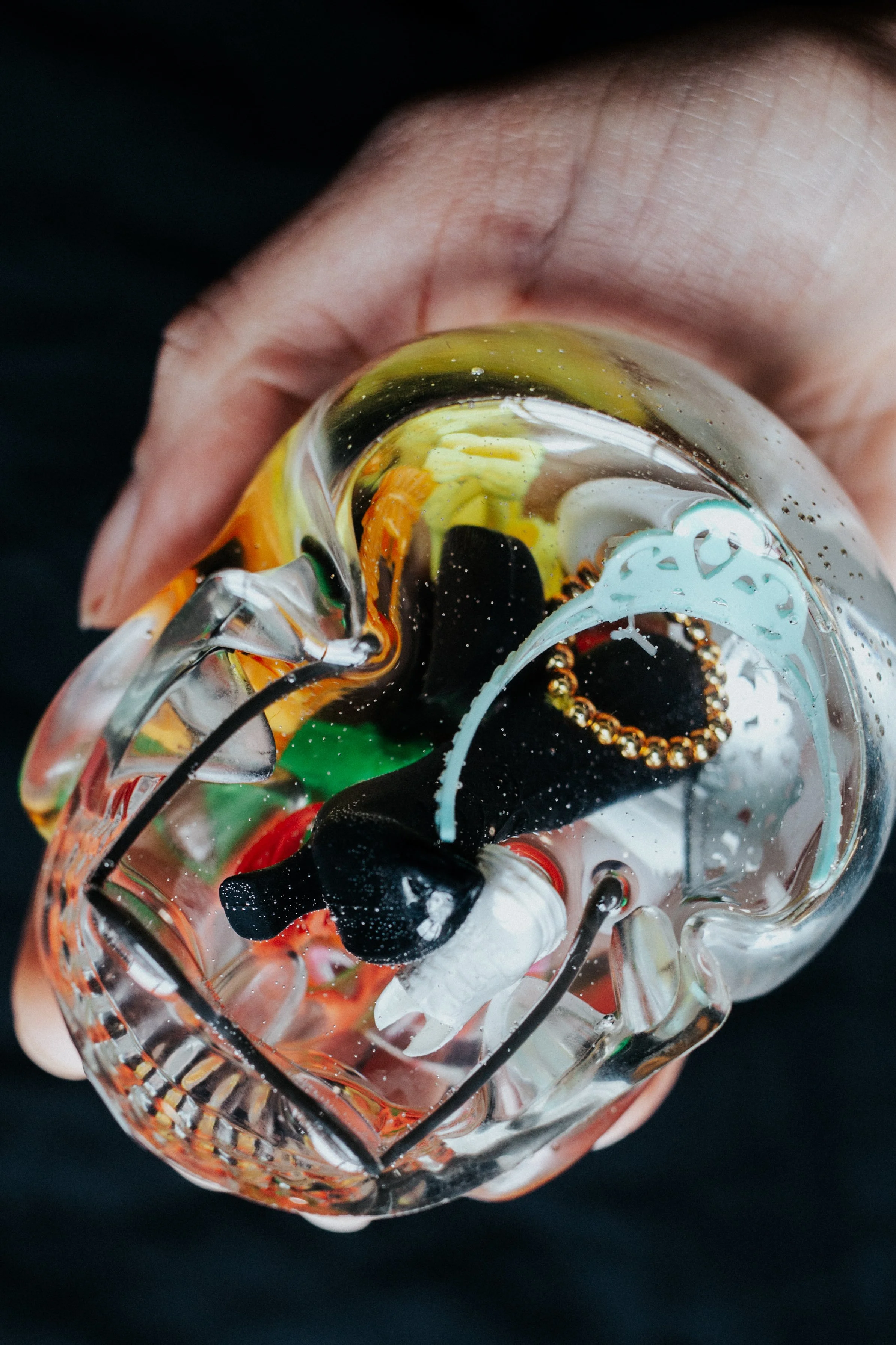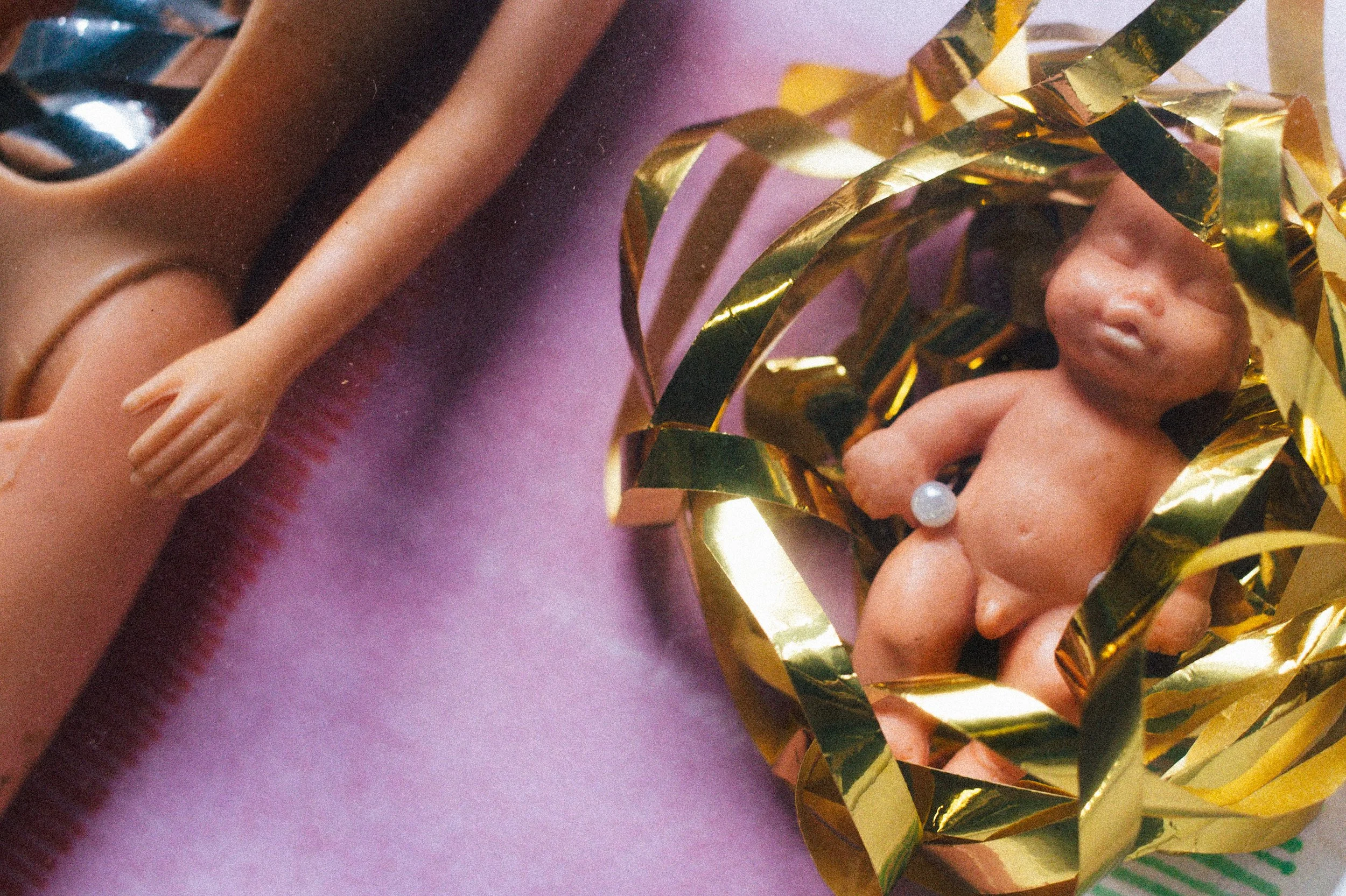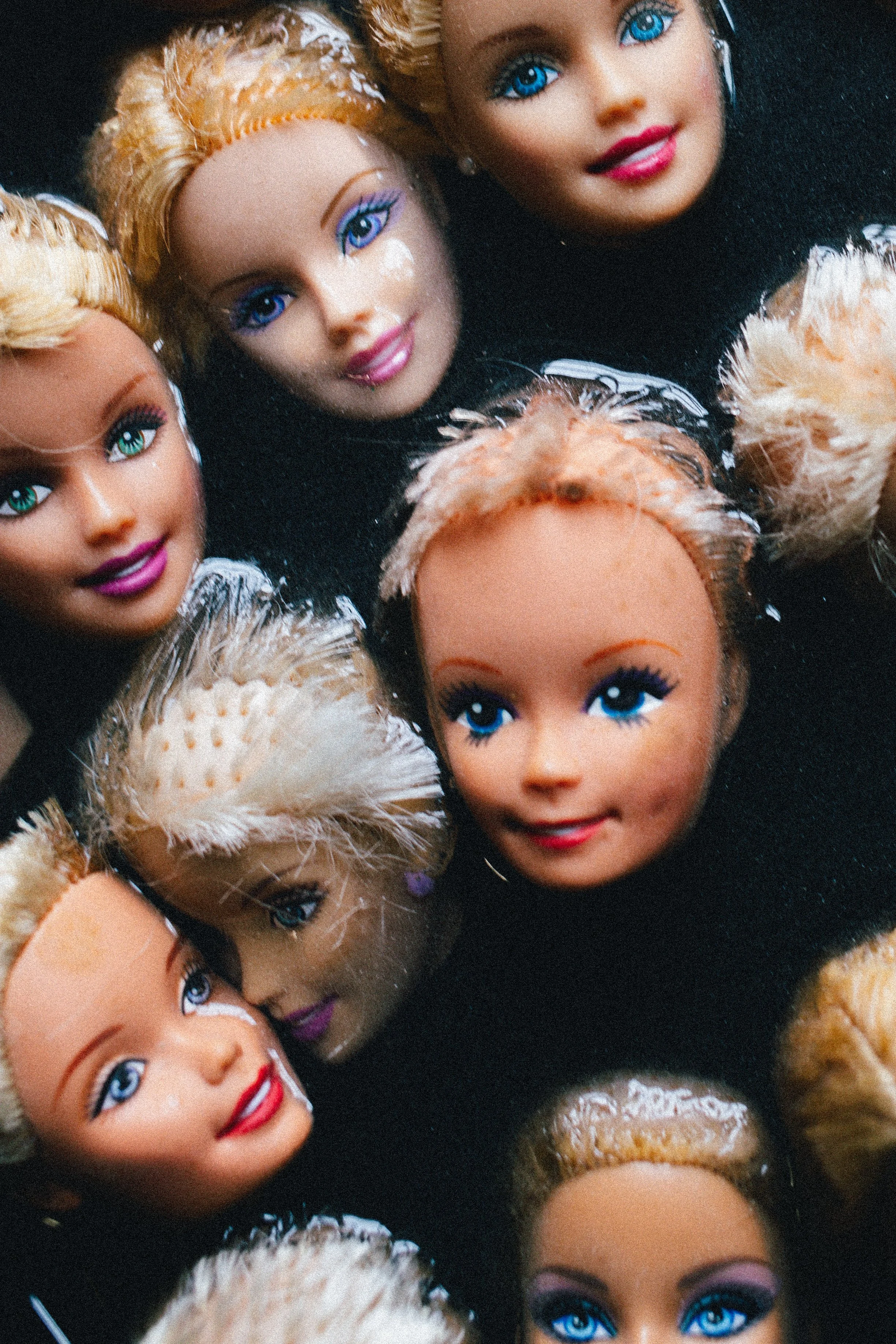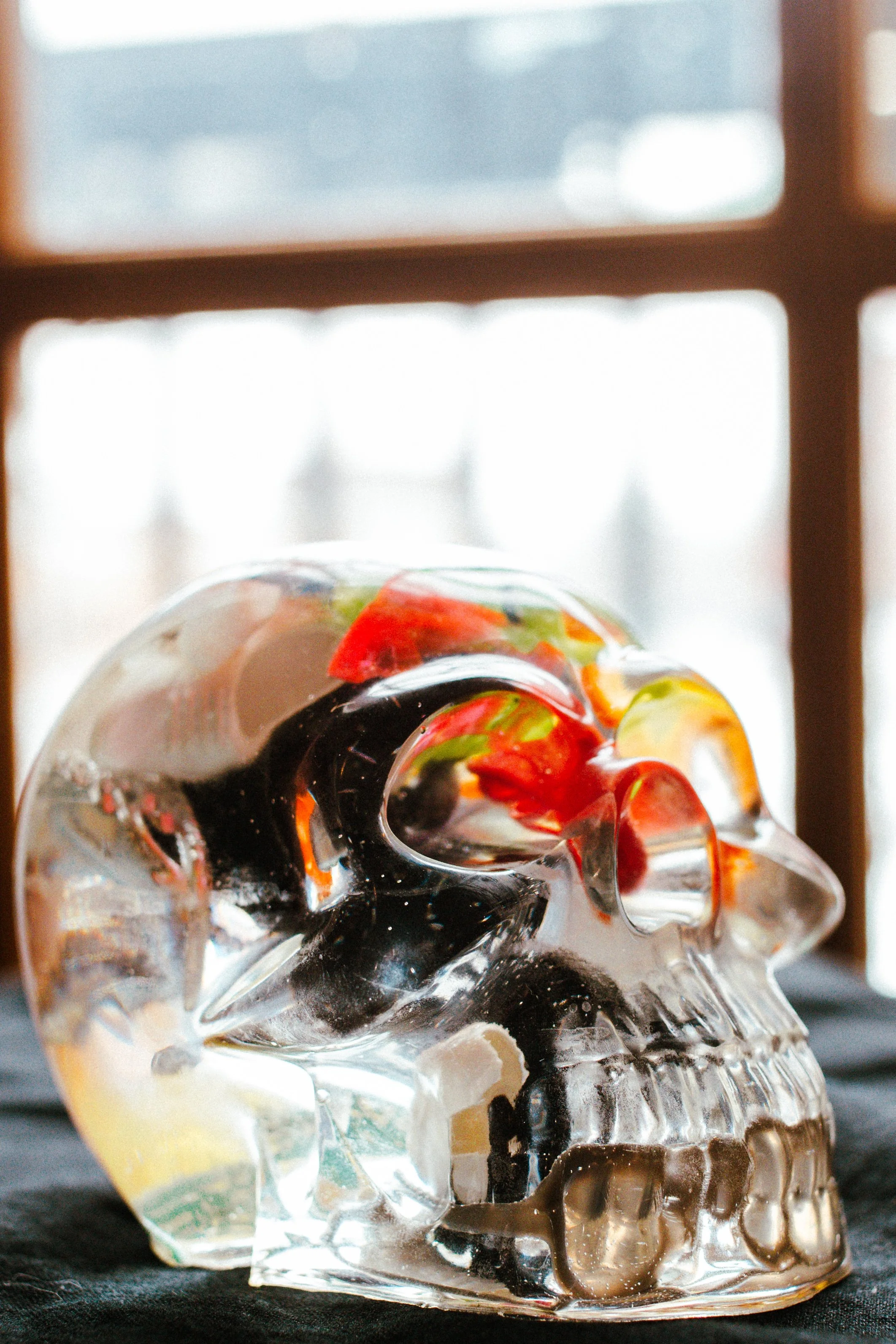Brittany Grimes: FUN HOUSE
“Art can be a way to reclaim what was once harmful and turn it into something beautiful and empowering.”
I had the pleasure of connecting with mixed media artist, Brittany Grimes, to photograph her unique and haunting sculptures for her upcoming exhibition at Gallery X in New Bedford, MA, and talk about the process of healing grief and trauma through her art.
We met up at a friend’s house and while we were surrounded by beautiful oddities and metaphysical objects, we tapped into an honest and vulnerable space to explore how the act of creating clears room to work through hard life experiences.
Justine Kenahan (Interviewer): I’m sitting here with Brittany Grimes, and we are talking about Brittany’s upcoming art show, The Funhouse. I just photographed some of Brittany’s pieces—beautiful stuff, creepy stuff, amazing stuff. Brittany, I’d love for you to start. Can you tell me about the moment or experience that first started this project and sparked the idea?
Brittany Grimes (Artist): In terms of the moment, I can look back to being at the Raynham Flea Market and coming across this pretty big Barbie. I was immediately drawn to it. I bought it, not knowing what I was going to do with it, but I knew I wanted to do something. Several years back, I visited a sculpture park with doll components in the woods, and as soon as I saw it, it really resonated with me. I stood there for several minutes, knowing I wanted to create something similar. The flea market was the place where the inspiration really started.
JK: So you’ve done a lot of work with doll parts before. What’s the connection for you, specifically with discarded materials? I mean, a lot of people get the heebie-jeebies from body parts, right? But in your case, you’re making incredible sculptural art. What’s the symbolism or meaning behind using doll materials?
BG: The doll materials are often reclaimed from things people are getting rid of. Toys, dolls, even the wrestling magazines I used for collages reflect what the “ideal” body should be—disproportionate, unrealistic, and unattainable for most people. For me, it’s about reclaiming those instruments of body image and reshaping them. It’s a way to self-reflect on my own relationship with my body and heal some of the body trauma caused by these societal standards.
JK: Would you say it’s like body dysmorphia caused by the ideal image portrayed in these dolls?
BG: Absolutely. A lot of the figures I use are specifically Barbie dolls, which, historically, have not been representative of real bodies. I know today there’s an effort to make Barbies more inclusive, but historically, they weren’t. By working with these pieces, I’m trying to reshape how we perceive those standards and our relationships with our bodies.
“The doll materials are oftentimes reclaimed… they reflect what the ideal body should be—and oftentimes beyond what an actual body looks like.”
JK: How has working with these materials impacted your own journey with body image? Do you feel like it’s healed you? Or is this more of an ongoing process, like therapy?
BG: It’s definitely ongoing. My relationship with my body has been strained, especially growing up as a mixed-race woman—Irish and Cape Verdean—in a predominantly white community. I was always aware of the differences between me and others around me. On top of that, I experienced significant domestic violence and sexual assault in a previous marriage. Those experiences completely disintegrated my relationship with my body.
Creating wasn’t possible until I reached a point of safety. Once I was safe, I could finally unlock those creative doors. I actually discussed this project with my dad the day before he unexpectedly passed away. That conversation has been a huge motivator for me to follow through on what I told him I would do. When I feel stuck, I channel those emotions into my work, and it feels like something he would be proud of.
JK: I can imagine this work would mean a lot to him. What do you think he’d say to you now, seeing all that you’ve accomplished?
BG: My dad was a man of few words. He’d probably just say, “Oh, Dad,” and leave it at that. But he’d show up to the opening. He’s been at every art show I’ve done, so there’s no doubt he’d be there.
There’s even a piece in the show titled “Dad”. It’s a male mannequin, collaged with wrestling magazines from the time when I used to watch wrestling with him. There are specific pieces in the collage that connect directly to our experiences, like images from WrestleMania or SummerSlam that we attended together. Creating that piece brought up a lot of emotions—grief, nostalgia, and pride.
JK: That’s so moving. Your attention to detail is incredible, and I can see how much thought you’ve put into every aspect of your work. What’s your process like when you’re creating? Do you just dive in, or do you have to be in a specific headspace?
BG: It really depends on the day and how I’m feeling. Sometimes, I have a clear plan and I dive right in. Other times, I focus on organizing materials to prepare for when inspiration strikes. My basement was chaos for years—mannequins and doll parts everywhere. I’m grateful for my partner’s patience because it’s his workspace too!
Even the prep work, like sorting fabric or doll parts, feels like part of the process. Without that groundwork, I wouldn’t be able to create as effectively. Sometimes I just have to take a break, which is hard because I love being in the zone. But taking those breaks is necessary, especially when working with materials like resin that require time to set.
“Creating wasn’t possible until I reached a point of safety. Once I was safe, I could finally unlock those creative doors.”
JK: What about challenges? Were there moments of doubt, or times when things didn’t go as planned? How did you push through?
BG: Patience was the biggest challenge. I had to learn to accept that this work couldn’t happen overnight. There were definitely moments of frustration when things didn’t go as planned, like resin not setting properly or pieces falling apart. But I learned to listen to my body and the art—knowing when to step away and when to come back.
Sometimes, I’d put on an album to transport me to a different time or headspace, and that helped me process whatever I was feeling at the moment. Music became a vital part of the creative process.
JK: How do you decide when a piece is done? Do you ever struggle with perfectionism as an artist?
BG: For me, it’s more about filling the space than striving for perfection. Many of my pieces are mannequins or busts, so I focus on whether the space feels complete. I don’t feel a lot of pressure to make things perfect—art is whatever I want it to be.
That said, some materials, like resin, have been experimental for me. I’ve had to learn patience and accept that not everything will work out the first time. Even failures teach me something valuable for next time.
JK: It sounds like you’ve embraced experimentation, especially with materials like resin. Were there any other new techniques or processes you tried for this project that you’re particularly proud of?
BG: Yes, resin has been a big one! It wasn’t part of my original proposal, but I started experimenting with it while trying to develop a stand for one of my pieces. That experimentation led to creating a handful of new pieces, which I’m really proud of.
I’ve also worked with two-part epoxy for building on mannequins, which is incredibly time-consuming. I tried tracking my hours at one point, but I started too late in the process to capture everything. The patience required for layering materials and waiting for things to dry taught me a lot. Sometimes I’d push too hard, and pieces would collapse or not set properly. Those were hard lessons, but they reminded me to slow down and listen to the process.
JK: Do you feel like learning to pace yourself and take breaks has been one of the biggest challenges of this project?
BG: Absolutely. I’m someone who likes to keep rolling when I get into a groove, so stepping away was tough. But it was necessary—not just for the art, but for my health. Working with resin and other materials meant I needed to take breaks to avoid overexposure to chemicals.
The other challenge was balancing breaks with momentum. It’s easy for a short break to stretch into weeks, but this project was always something I wanted to come back to. The emotions fueling this work were always there, so I couldn’t escape them for long.
“I don’t feel a lot of pressure to make things perfect—art is whatever I want it to be.”
JK: That’s really powerful. Your willingness to share your story and create this work is so brave. I imagine it’s also shocking and poignant for viewers, especially with the personal elements woven into each piece.
Looking ahead, what’s next for you? Do you have plans to build on this work, or are there new themes or ideas you want to explore?
BG: For the future, I really want to hone in on sewing as a craft. It’s something I’ve been teaching myself, and it’s been another way to practice patience and self-sufficiency.
I’m working on projects using reclaimed materials, like fabrics from the Creative Reuse Center or my grandfather’s old belongings. For example, I’m making a clown suit out of one of his bedsheets right now. It’s fun, and it feels like a way to bring more of my personal story into my work.
JK: A clown suit? That’s such a fascinating direction! I love the idea of leaving us with a cliffhanger there.
For my last question, what would you say to an artist—or anyone—who wants to create or share their work but struggles with self-doubt?
BG: First, fuck the doubts. That’s number one.
I want people to know that I wasn’t able to tap into any creativity while I was stuck in a cycle of violence. For anyone in that situation, I hope this show demonstrates that it’s possible to escape, to find safety, and to create something meaningful.
Safety is key—it gives you the space to express yourself, process your emotions, and move forward. Part of the proceeds from this show will go to New Hope, a domestic violence agency in Attleboro, Massachusetts. They do incredible work with survivors of violence, and I hope this show can be a little more impactful than just a visual experience.
JK: That’s amazing. This has been such an inspiring conversation. Is there anything else you’d like to add?
BG: I just want to thank you for taking the time to listen, support, and photograph my work. It means a lot to me.
And if I could leave people with one final thought, it’s this: progress is always possible. I heard a quote recently—something like, “If you’re not making progress, you’re making excuses.” It really stuck with me. Every day, I look in the mirror and ask myself which one I’m doing.
JK: That’s such a great note to end on. Thank you so much, Brittany. I can’t wait to see how the show comes together!
“Fuck the doubts. You can get out, you can be free, you can be safe—and from that safety, you can create.”

